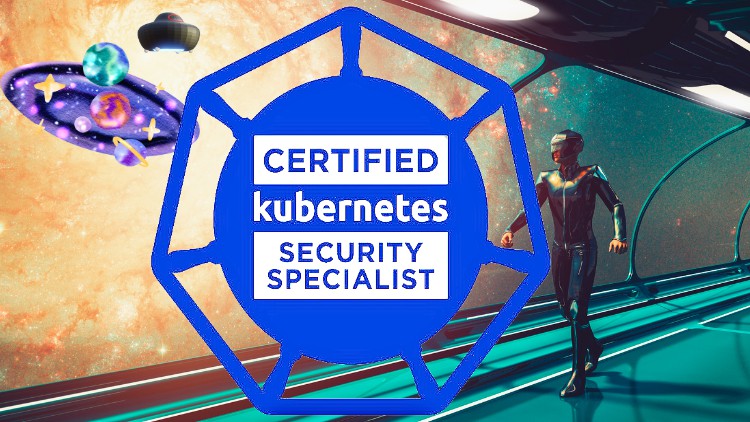
Licensed Kubernetes Safety Specialist Final Preparation Information Masterclass | Principle | Palms-on | Labs | Full
What you’ll be taught
Use Community safety insurance policies to limit cluster degree entry
Use CIS benchmark to evaluate the safety configuration of Kubernetes elements (etcd, kubelet, kubedns, kubeapi)
Correctly arrange Ingress objects with safety management
Shield node metadata and endpoints
Decrease use of, and entry to, GUI parts
Confirm platform binaries earlier than deploying
Prohibit entry to Kubernetes API
Use Function Primarily based Entry Controls to attenuate publicity
Train warning in utilizing service accounts e.g. disable defaults, reduce permissions on newly created ones
Replace Kubernetes continuously
Decrease host OS footprint (cut back assault floor)
Decrease IAM roles
Decrease exterior entry to the community
Appropriately use kernel hardening instruments akin to AppArmor, seccomp
Setup acceptable OS degree safety domains
Handle Kubernetes secrets and techniques
Use container runtime sandboxes in multi-tenant environments (e.g. gvisor, kata containers)
Implement pod to pod encryption by use of mTLS
Decrease base picture footprint
Safe your provide chain: whitelist allowed registries, signal and validate photos
Use static evaluation of consumer workloads (Kubernetes sources, Docker recordsdata)
Scan photos for identified vulnerabilities
Carry out behavioral analytics of syscall course of and file actions on the host and container degree to detect malicious actions
Detect threats inside bodily infrastructure, apps, networks, information, customers and workloads
Detect all phases of assault regardless the place it happens and the way it spreads
Carry out deep analytical investigation and identification of dangerous actors inside atmosphere
Guarantee immutability of containers at runtime
Use Audit Logs to observe entry
Description
Cluster Setup
- Use Community safety insurance policies to limit cluster degree entry
- Use CIS benchmark to evaluate the safety configuration of Kubernetes elements (etcd, kubelet, kubedns, kubeapi)
- Correctly arrange Ingress objects with safety management
- Shield node metadata and endpoints
- Decrease use of, and entry to, GUI parts
- Confirm platform binaries earlier than deploying
Cluster Hardening
- Prohibit entry to Kubernetes API
- Use Function Primarily based Entry Controls to attenuate publicity
- Train warning in utilizing service accounts e.g. disable defaults, reduce permissions on newly created ones
- Replace Kubernetes continuously
System Hardening
- Decrease host OS footprint (cut back assault floor)
- Decrease IAM roles
- Decrease exterior entry to the community
- Appropriately use kernel hardening instruments akin to AppArmor, seccomp
Decrease Microservice Vulnerabilities
- Setup acceptable OS degree safety domains
- Handle Kubernetes secrets and techniques
- Use container runtime sandboxes in multi-tenant environments (e.g. gvisor, kata containers)
- Implement pod to pod encryption by use of mTLS
Provide Chain Safety
- Decrease base picture footprint
- Safe your provide chain: whitelist allowed registries, signal and validate photos
- Use static evaluation of consumer workloads (e.g.Kubernetes sources, Docker recordsdata)
- Scan photos for identified vulnerabilities
Monitoring, Logging and Runtime Safety
- Carry out behavioral analytics of syscall course of and file actions on the host and container degree to detect malicious actions
- Detect threats inside bodily infrastructure, apps, networks, information, customers and workloads
- Detect all phases of assault regardless the place it happens and the way it spreads
- Carry out deep analytical investigation and identification of dangerous actors inside atmosphere
- Guarantee immutability of containers at runtime
- Use Audit Logs to observe entry
Content material
Introduction
The put up Licensed Kubernetes Safety Specialist Masterclass appeared first on destinforeverything.com/cms.
Please Wait 10 Sec After Clicking the "Enroll For Free" button.








